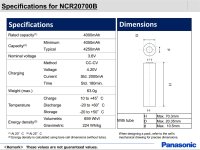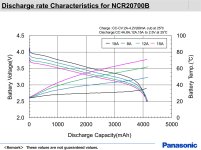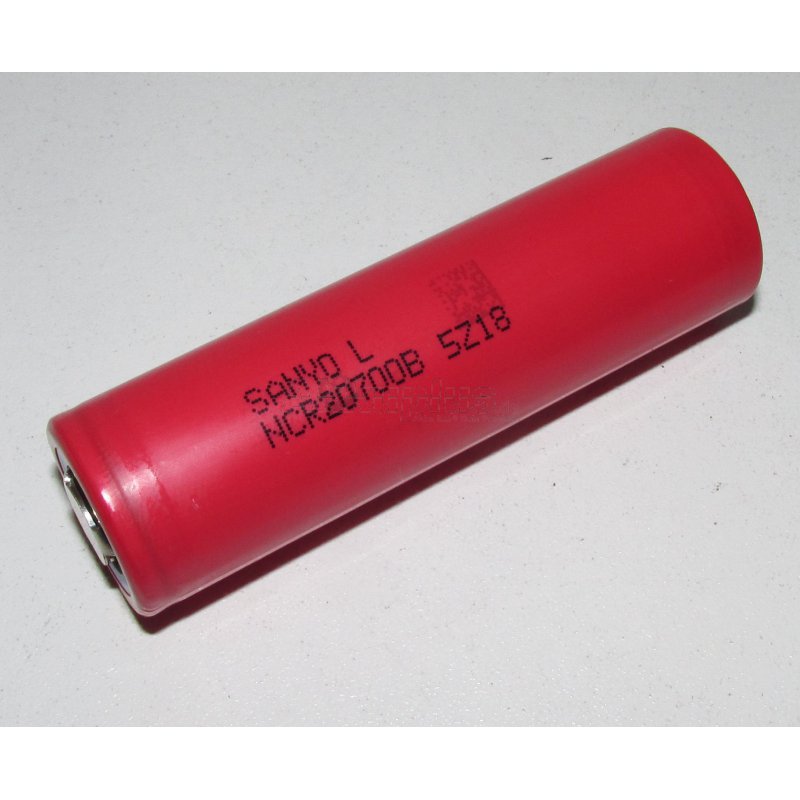fellow
1 kW
Sanyo NCR20700B 4250mAh cell pdf is here:
http://akkuplus.de/mediafiles/Datenblatt/Panasonic/Panasonic_NCR20700B.pdf
Current price in EU is 14€/piece, but it is expected to drop soon.
Specifications
Rated capacity 4000mAh.
Minimum capacity 4050mAh.
Typical capacity 4250mAh.
Charging voltage 4.2V.
Std charging current 2A.
Mass 63 g.
According to the pdf file I_absolute_max is 20A/cell, and I_recommended is 8A/cell or less. At 12A, capacity drops over cycle time too much to be practical in ebike use.



View attachment 1


http://akkuplus.de/mediafiles/Datenblatt/Panasonic/Panasonic_NCR20700B.pdf
Current price in EU is 14€/piece, but it is expected to drop soon.
Specifications
Rated capacity 4000mAh.
Minimum capacity 4050mAh.
Typical capacity 4250mAh.
Charging voltage 4.2V.
Std charging current 2A.
Mass 63 g.
According to the pdf file I_absolute_max is 20A/cell, and I_recommended is 8A/cell or less. At 12A, capacity drops over cycle time too much to be practical in ebike use.



View attachment 1



